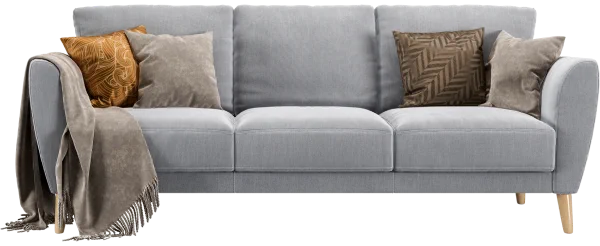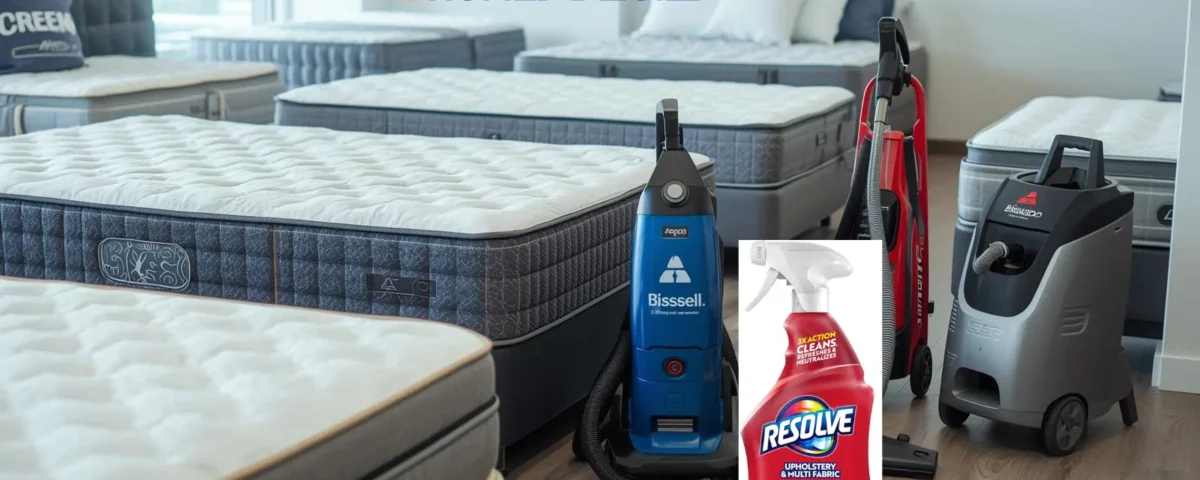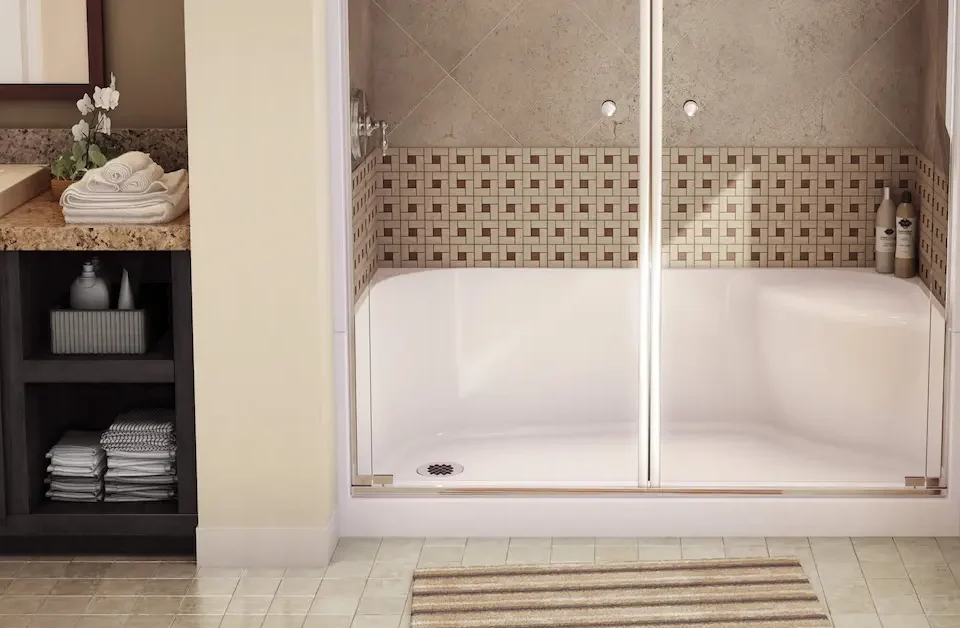
The Step, by, Step Guide to Improving Your Home’s Indoor Air Quality
September 26, 2025
The Modern Homesteader’s Guide to Thriving in 21st Century America
October 2, 2025The Mattress Dilemma
Are you drowning in a sea of mattress options, feeling lost in a tangle of terms like "memory foam," "pocketed coils," and "firmness scales"? You’re not alone. Choosing the right mattress is more than just a shopping decision, it’s an investment in your health, comfort, and daily well, being. But with so many choices and conflicting advice, it can feel downright overwhelming.
This guide from Homes & Looms is here to cut through the noise We’ll provide a clear, unbiased comparison between the two most popular mattress types: hybrid innerspring and all, foam. From construction and comfort to pros and cons, we’ll break it all down so you know exactly what each mattress offers.
By the end, you’ll have the knowledge and confidence to pick the mattress that suits your body, sleep style, and personal preferences, perhaps even designing a dream tea spot to relax.Say goodbye to restless nights and hello to years of truly restorative sleep.
What is an All, Foam Mattress?
All, foam mattresses are made entirely of layers of foam, without any innerspring coils. They rely on different foam types and densities to provide comfort, support, and durability. Understanding these layers can help you see why all, foam mattresses are a popular choice for many sleepers.
Understanding All, Foam Construction & Materials
All, foam mattresses typically have three main layers, each serving a distinct purpose:
- Comfort Layer (Top)
This is the layer you actually lie on, and it’s designed for softness and pressure relief. Common options include:
- Memory Foam: Conforms closely to your body, providing excellent pressure relief and that classic “hug” feeling. It also isolates motion well, making it great for couples.
- Latex Foam: Offers a more responsive feel than memory foam, is naturally durable, provides pressure relief, and tends to sleep cooler. It’s often a preferred natural alternative.
- Polyfoam (Polyurethane Foam): The most common foam, available in different densities. It’s often used as a comfort or transition layer and can range from soft to firm.
- Transition Layer (Middle)
This layer usually consists of denser polyfoam. Its role is to provide a gradual shift from the soft comfort layer to the firmer support core, adding support while preventing that “bottoming out” feeling. - Support Core (Base)
The base is made of high, density foam, providing stability, durability, and preventing sagging over time. A strong support core is crucial for maintaining the mattress’s shape and longevity.
How the Layers Work Together
The different foam layers create a synergy: the top layer cushions and contours, the middle layer eases the transition from softness to firmness, and the base ensures long, term support. This combination allows all, foam mattresses to adapt closely to your body while maintaining proper spinal alignment.
Recommended All, Foam Mattress Types
- High, Density Memory Foam Mattresses: Ideal for superior pressure relief and durability.
- Open, Cell or Gel, Infused Foam Mattresses: Designed for better airflow and breath ability, helping to regulate temperature.
- Latex Foam Mattresses: A natural alternative that’s responsive, durable, and cooler than traditional memory foam.
Advantages and Disadvantages of All, Foam Mattresses
All, foam mattresses have clear strengths and weaknesses, depending on your sleep style and preferences. Research, including studies on memory foam’s effects on pressure points and spinal alignment, highlights their benefits, especially for side sleepers.
- Excellent pressure relief
- Superior motion isolation
- Quiet operation
- Great for side sleepers
- Often more affordable initially
- Contours closely to the body
- Can sleep hot (unless cooling technology is included)
- Less bounce/responsiveness; can feel “sinking”
- Heavy and difficult to move or rotate
- Off, gassing odors possible (usually dissipates quickly)
- Durability varies significantly with foam density and quality
- Can be difficult to move on for restless sleepers
All, foam mattresses are an excellent choice if you prioritize body contouring, motion isolation, and quiet sleep. Their main trade, offs are heat retention, responsiveness, and weight, so consider these factors carefully when choosing your mattress.

FDW 8-Inch Twin Gel Memory Foam Mattress – Medium Firm

ZINUS 6 Inch Twin Green Tea Memory Foam Mattress
What is a Hybrid Innerspring Mattress?
Hybrid innerspring mattresses combine the support of traditional coils with the comfort of modern foam or latex layers. This “best of both worlds” design aims to provide both pressure relief and proper spinal support, appealing to sleepers who want the contouring benefits of foam without sacrificing responsiveness and bounce.
Unpacking Hybrid Mattress Construction
Coil Support Systems
The core of a hybrid mattress is its coil system, which provides foundational support and durability:
- Pocketed Coils (Individually Wrapped Coils): The most common choice in modern hybrids. Each coil works independently, offering excellent motion isolation, targeted support for different body areas, and improved airflow for a cooler sleep experience.
- Continuous Coils/Bonnell Coils: A more traditional coil system. These coils are interconnected, making them highly durable, but they offer less motion isolation and contouring than pocketed coils.
Comfort Layers
Above the coils are foam or latex layers that provide cushioning and pressure relief:
- Foam (Memory, Poly, Gel, Infused): Offers contouring and support while potentially including cooling properties for temperature regulation.
- Latex: Adds responsiveness, a natural feel, and durability, often sleeping cooler than foam.
- Micro, Coils: Smaller coils embedded in the comfort layers enhance contouring and airflow, combining the best features of foam and coil systems.
Recommended Hybrid Mattress Types
- Pocketed Coil Hybrid Mattresses: Provide targeted support and excellent motion isolation, ideal for couples.
- Micro, Coil Hybrid Mattresses: Enhance contouring and airflow for sleepers who want added comfort and breathability.
- Continuous Coil Hybrid Mattresses: Offer a traditional feel with high durability, suitable for sleepers who prefer a firmer foundation.
Advantages and Disadvantages of Hybrid Mattresses
Hybrid mattresses are praised for their combination of support and comfort. Chiropractors and physical therapists often note that hybrid designs, especially those with zoned pocketed coils, can benefit spinal alignment and joint health.
- Excellent support and spinal alignment
- Good breathability and temperature regulation
- Responsive and bouncy feel, easy to move on
- Strong edge support (often reinforced)
- Versatile for various sleep positions
- Often more durable due to coil system
- Can be more expensive than all, foam options
- Heavier and more difficult to move or rotate
- Motion isolation can be less than all, foam (though pocketed coils reduce it)
- Potential for noise (modern pocketed coils are quiet)
- Can feel too firm for some side sleepers depending on comfort layers
Hybrids are a versatile choice, combining the contouring comfort of foam with the support and durability of coils. They work well for sleepers who want a balance between softness and responsiveness, with better airflow and temperature regulation than all, foam mattresses.

ZINUS 8 Inch Foam and Spring Hybrid Mattress Twin, Fiberglass Free,

Full Mattress,12 Inch Hybrid Mattress in a Box with Gel Memory Foam,Individually Wrapped Pocket Coils Innerspring for a Cool & Peaceful Sleep
Direct Comparison: Hybrid vs. All, Foam (Key Factors)
Choosing between a hybrid and an all, foam mattress comes down to understanding how each performs across important sleep metrics. To provide an unbiased look, we’re comparing support, pressure relief, motion isolation, temperature regulation, responsiveness, durability, edge support, noise, and price. Beyond comfort and support, we’ll highlight “unsung hero” factors, like motion isolation for couples, ease of movement for restless sleepers, and edge support for those who use the full mattress surface.
|
Feature |
Hybrid Innerspring |
All, Foam |
Who It's Best For |
|
Support |
Zoned coil systems provide robust, targeted support across the body |
Contours closely to cradle the body, distributing weight evenly |
Back/stomach sleepers and heavier individuals vs. Side sleepers and lighter individuals |
|
Pressure Relief |
Good, especially with thick foam or latex comfort layers |
Excellent, conforms deeply to alleviate pressure points |
Those needing targeted support vs. Those needing deep cradling |
|
Motion Isolation |
Good; pocketed coils reduce motion transfer |
Excellent; foam absorbs movement effectively |
Couples (pocketed coil hybrids) vs. Couples seeking superior isolation |
|
Temperature Regulation |
Often cooler due to airflow through coils |
Can sleep hot unless advanced cooling technologies are integrated |
Hot sleepers vs. Cooler sleepers or those prioritizing pressure relief |
|
Bounce/Responsiveness |
High; easy to move and change positions |
Low; “sink, in” feel, may feel stuck |
Active sleepers or combination sleepers vs. Those who prefer a stable surface |
|
Durability |
High; coil system plus foam layers contribute to longevity |
Varies with foam density and quality |
Long, term investment seekers vs. Budget, conscious (can be durable with high, density foam) |
|
Edge Support |
Often excellent due to reinforced coils |
Varies; can be weak in lower, quality models |
Those who sit or sleep near the edge vs. Those who stay centered |
|
Noise Level |
Very quiet with modern pocketed coils |
Virtually silent |
All sleepers, especially sensitive ones |
|
Price Range |
Generally higher |
Often more affordable, but high, end options exist |
Those with a larger budget vs. Those on a tighter budget (initially) |
This comparison highlights that neither mattress is universally better, it depends on your personal needs, just like planning living room makeovers. Hybrids excel in responsiveness, edge support, and temperature regulation, while all, foam mattresses shine in pressure relief, motion isolation, and body contouring. Considering these “unsung hero” factors can help you choose the mattress that fits not just your comfort preferences, but your sleep habits and lifestyle, perhaps with an organic modern living room guide.
Who Should Choose a Hybrid Mattress?
Hybrid mattresses are a versatile option, but they tend to shine for certain sleepers and lifestyles. Here’s how to decide if a hybrid is right for you.
Expert Tip: Prioritize Sleep Position
Back and stomach sleepers often need firmer, more even support to maintain proper spinal alignment. Hybrids, with their coil, based support, deliver this consistency better than most all, foam options.
Expert Tip: Consider Body Weight
Heavier individuals benefit from the robust support of coils, which prevent excessive sinking and help maintain alignment over time.
Mattress Matchmaking for Specific Lifestyles
- Hot Sleepers: Hybrids allow airflow through the coil system, helping to dissipate heat. Look for models with breathable coils and cooling comfort layers for added temperature regulation.
- Back and Stomach Sleepers: The firmer, supportive nature of hybrid mattresses keeps the spine properly aligned, reducing pressure points.
- Heavier Individuals: The coil system supports weight evenly and prevents sagging, enhancing durability and comfort.
- Active Sleepers or Those Who Move a Lot: Hybrids are responsive and bouncy, making it easier to change positions during the night.
- People with Mobility Issues: The supportive yet responsive surface makes getting in and out of bed easier.
- Couples (Especially With Pocketed Coils): Modern hybrids strike a balance between motion isolation and responsiveness, so one partner’s movement doesn’t disturb the other.
- Those Prioritizing Edge Support: Many hybrids feature reinforced edges, providing a larger usable surface for sitting or sleeping.
In short, if you want support, responsiveness, durability, and better airflow, a hybrid mattress is an excellent choice. It’s particularly well, suited for active sleepers, hot sleepers, back and stomach sleepers, heavier individuals, and couples who want a balance of comfort and performance.
Who Should Choose an All, Foam Mattress?
All, foam mattresses excel in contouring, pressure relief, and motion isolation, making them ideal for certain sleep positions, body types, and lifestyles.
Expert Tip: Prioritize Sleep Position
Side sleepers typically need softer mattresses to relieve pressure on shoulders and hips. The deep contouring of all, foam mattresses provides excellent support in these areas.
Expert Tip: Motion Isolation Matters for Couples
If you share a bed with a partner and are sensitive to movement, all, foam mattresses are hard to beat. They absorb motion effectively, so you’re less likely to be disturbed when your partner shifts positions.
Mattress Matchmaking for Specific Lifestyles
- Side Sleepers: Foam’s contouring relieves pressure points for shoulders and hips, reducing aches and improving comfort.
- Those Needing Deep Pressure Relief: Individuals with joint pain, arthritis, or fibromyalgia benefit from the hugging, supportive surface.
- Couples Sensitive to Motion: Superior motion isolation ensures minimal disturbance from a partner’s movements, perfect for different sleep schedules.
- Those Who Love a “Hug” Feeling: The conforming foam surface creates a cradling sensation that some sleepers find incredibly comforting.
- Lighter Individuals: Can experience adequate support without the need for the robust coil system in hybrids.
- Budget, Conscious Buyers: All, foam mattresses often offer a more affordable entry point while still providing quality comfort.
- Noise, Sensitive Sleepers: Foam layers are virtually silent, eliminating squeaks and creaks from coils.
In summary, all, foam mattresses are ideal for side sleepers, those seeking deep pressure relief, couples sensitive to motion, lighter individuals, and anyone who enjoys a cradling “hug” sensation. They also appeal to buyers looking for quiet, comfortable sleep at a range of price points.
Factors to Consider Before Buying
Buying a mattress is a significant investment, so it’s essential to evaluate your options carefully, similar to a dream home design and care guide. Being transparent about the criteria you should use ensures you make a decision tailored to your unique needs. Think of this as your personalized checklist or a guide you could turn into an interactive decision tree or quiz to help narrow down the ideal mattress type.
1. Sleep Position
- Are you a side, back, stomach, or combination sleeper?
- Expert Tip: Side sleepers often benefit from softer, contouring mattresses, while back and stomach sleepers usually need firmer support, which hybrids often provide.
2. Body Type & Weight
- Lighter, average, or heavier individuals have different support needs.
- Expert Tip: Heavier sleepers often benefit from the robust support of hybrid mattresses to prevent excessive sinking.
3. Firmness Preference
- Soft, medium, or firm? Firmness affects comfort, support, and motion transfer.
- Tool Suggestion: Use a 1–10 firmness scale to compare mattress options and find your ideal feel.
4. Temperature Regulation
- Do you sleep hot or cold?
- Expert Tip: Hot sleepers should look for cooling features such as breathable coils, gel, infused foam, or open, cell structures.
5. Motion Isolation
- How important is undisturbed sleep with a partner?
- Expert Tip: All, foam mattresses excel in motion isolation, reducing sleep disruptions.
6. Edge Support
- Do you sit on the edge or use the full sleep surface?
- Expert Tip: Hybrids often have reinforced edges, giving you a larger usable surface.
7. Budget
- Establish a realistic price range based on your priorities and mattress type.
8. Sleep Trial & Warranty
- Understand the trial period, return policy, and warranty coverage.
- Expert Tip: Take full advantage of sleep trials to ensure the mattress truly suits your needs.
9. Delivery & Setup
- White, glove service or bed, in, a, box? Consider convenience and setup requirements.
10. Foundation Compatibility
- Ensure your bed frame or foundation works with your chosen mattress.
- Expert Tip: The right foundation can affect comfort, support, and mattress longevity.
11. Material Certifications
- Look for CertiPUR, US, OEKO, TEX, or GOLS (for organic latex) to ensure safety and quality.
- Expert Tip: Verified certifications guarantee that materials meet health and environmental standards.
12. Off, Gassing Concerns
- New foam mattresses may release odors initially. Allow for ventilation when setting up your mattress.
13. Factor in Future Needs
- Consider if your sleep requirements might change over time, such as during pregnancy, aging, or back issues. Choosing a versatile mattress can provide long, term satisfaction.
Common Myths Debunked
Buying a mattress can be confusing, and there are plenty of misconceptions floating around. Let’s separate fact from fiction, so you can make a confident, evidence, based decision.
Myth 1: “All foam mattresses always sleep hot.”
Fact: Traditional memory foam can retain heat, but modern all, foam mattresses use cooling technologies, like open, cell structures, gel infusions, graphite, or copper, to dissipate heat and keep you comfortable.
Myth 2: “Hybrid mattresses are always bouncy and noisy.”
Fact: Modern hybrid designs with individually pocketed coils minimize motion transfer and operate quietly. You get the bounce many sleepers enjoy without disruptive noise.
Myth 3: “Firmer mattresses are always better for back pain.”
Fact: There’s no one, size, fits, all. Too firm can be as uncomfortable as too soft. Sleep physicians and chiropractors emphasize that the ideal mattress balances support and pressure relief for your body type, sleep position, and personal comfort preferences.
Myth 4: “All mattresses last 10 years, regardless of type.”
Fact: While 7–10 years is a general guideline, lifespan depends on material quality, construction (for example, using treated lumber for DIY projects), body weight, and maintenance. High, density foams and well, constructed hybrid coil systems generally last longer.
Myth 5: “You can tell a mattress is right for you in 5 minutes.”
Fact: It usually takes several weeks for your body to adjust to a new mattress. That’s why generous sleep trials are essential to determine whether a mattress truly suits you.
**Myth 6: “Eco, friendly mattresses are always all, natural or organic.”
Fact: Some are, but many brands achieve sustainability through certified foams like CertiPUR, US, recycled materials, or eco, friendly production methods without being fully organic.
Environmental & Sustainability Considerations
- All, Foam Options: Look for mattresses made with certified foams, natural latex, or recycled materials for a reduced environmental footprint.
- Hybrid Options: Many hybrids use responsibly sourced coils and foams with certifications, combining durability with eco, conscious design, which can also contribute to better indoor air quality.
Debunking these myths helps you focus on what really matters: comfort, support, durability, and sustainability, rather than misconceptions or marketing claims.
Enhancing Your Mattress Investment
Choosing the right mattress isn’t just about comfort, it’s an investment in your health, sleep quality, and overall well, being. To make the decision easier, consider using an interactive “Find Your Match” guide, which can take the form of a simple quiz or visual flowchart.
Find Your Perfect Mattress
Answer a few questions to discover whether a hybrid or all-foam mattress is right for you
Your Perfect Mattress
Based on your answers, we recommend:
Hybrid Mattress
Ideal for sleepers needing:
- Strong support and durability
- Enhanced airflow for cooler sleep
- Responsive bounce for easy movement
- Reinforced edges for full surface use
All-Foam Mattress
Perfect for sleepers seeking:
- Deep pressure relief and contouring
- Superior motion isolation
- A cradling "hug" sensation
- Affordability without sacrificing comfort
Maintenance & Longevity Guide by Mattress Type
Your mattress is a long, term investment in comfort, health, and sleep quality. Proper care can significantly extend its lifespan, ensuring you get years of restorative rest. Here’s a breakdown of tips for both all, foam and hybrid mattresses, along with general maintenance advice.
All, Foam Mattress Care
- Rotation: Rotate your mattress head, to, foot every 3–6 months to promote even wear and prevent sagging.
- Cleaning: Spot clean with mild detergent and water; avoid harsh chemicals that can damage foam.
- Ventilation: Allow the mattress to breathe, especially when new, to dissipate off, gassing and maintain freshness.
- Foundation: Use a flat, solid, or closely slatted foundation to support the mattress properly and prevent deformation.
Hybrid Mattress Care
- Rotation: Rotate regularly (head, to, foot) to maintain consistent support and comfort.
- Cleaning: Spot clean as needed, and consider a mattress protector to prevent stains or spills.
- Foundation: Compatible with most foundations, but always check manufacturer guidelines to maintain performance and warranty coverage.
General Tips for Both Mattress Types
- Use a Mattress Protector: Protects against spills, dust, and allergens.
- Avoid Jumping on the Bed: Prevents damage to coils, foam, and the overall structure.
- Keep Pets Off the Mattress: Reduces wear, hair, and potential damage.
- Know When to Replace: Watch for sagging, reduced comfort, or signs of wear and tear.
The “Future, Proof” Mattress: Maximizing Longevity
Treating your mattress as a long, term home investment means combining good maintenance practices with smart usage. Regular rotation, proper foundation support, protective covers, and careful handling all contribute to extending the life of your mattress. The longer you maintain it, the more value you get out of your initial purchase, saving money while ensuring consistent, qu

BISSELL Little Green Mini Portable Carpet and Upholstery Deep Cleaner, Car/Auto Detailer, with HydroRinse Self-Cleaning Tool and 4" Tough Stain Tool, Tea Green

FEPPO Mattress Vacuum Cleaner, 16Kpa Bed Vacuum Cleaner with 253.7nm UV-C Light, 140°F Heat, HEPA Filter & Ultrasonic, Versatile Handheld Vacuums for Bed, Sofa, Couch, Crib

Resolve 22 fl oz Liquid Multi-Fabric Cleaner and Upholstery Stain Remover
Conclusion: Making Your Informed Decision
Choosing the right mattress ultimately comes down to understanding your unique sleep needs, as does selecting furniture brands. All, foam mattresses excel in pressure relief, motion isolation, and body contouring, making them ideal for side sleepers, lighter individuals, and couples sensitive to movement. Hybrid mattresses combine coil support with foam comfort layers, offering robust support, responsiveness, better airflow, and reinforced edges, perfect for back or stomach sleepers, heavier individuals, and those who value bounce and durability.
Remember, the “best” mattress isn’t universal, it depends on your sleep position, body type, lifestyle, and personal preferences, including safe and stylish kids' room decor. With the insights provided in this guide, you are now equipped to navigate the mattress market confidently, weigh pros and cons, and make an informed decision tailored to your needs.
Take Action: Apply the factors we’ve discussed, sleep position, body weight, temperature preferences, motion isolation, edge support, and budget, perhaps even planning a Super Bowl party. Take advantage of sleep trials, test different mattresses, and prioritize your unique comfort and support requirements to find the mattress that will give you years of restorative sleep.
For those with specific health concerns or back issues, consult a sleep specialist or medical professional to ensure your choice supports long, term spinal health and overall well, being, and prevent scope creep in home renovation projects.
Last Updated: September 2025
We are committed to regularly reviewing and updating this guide to reflect the latest mattress innovations, expert recommendations, and consumer feedback, ensuring you always have accurate and relevant information, much like selecting non-toy gifts for kids.






